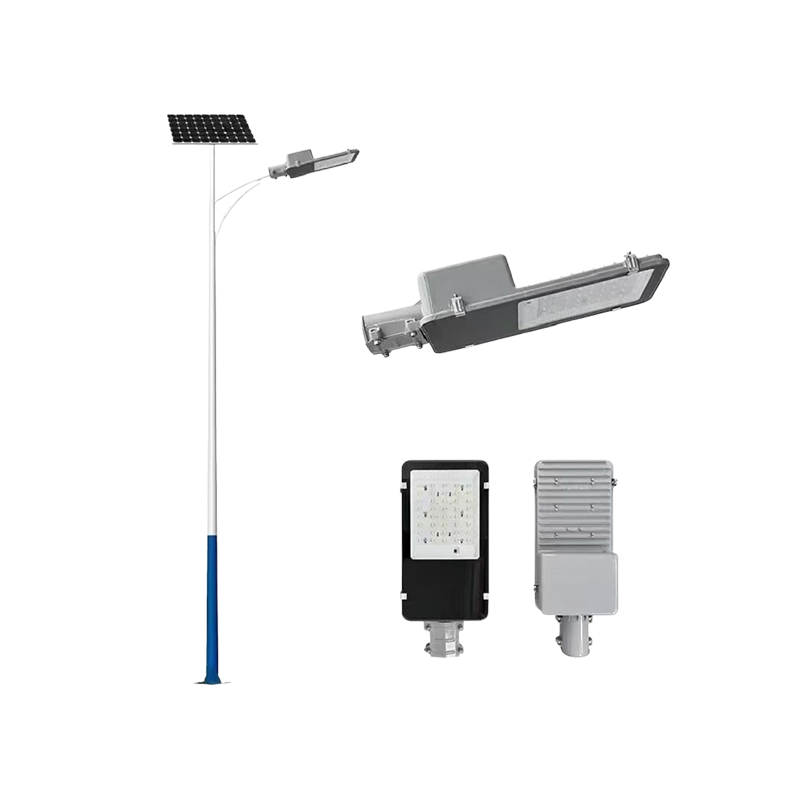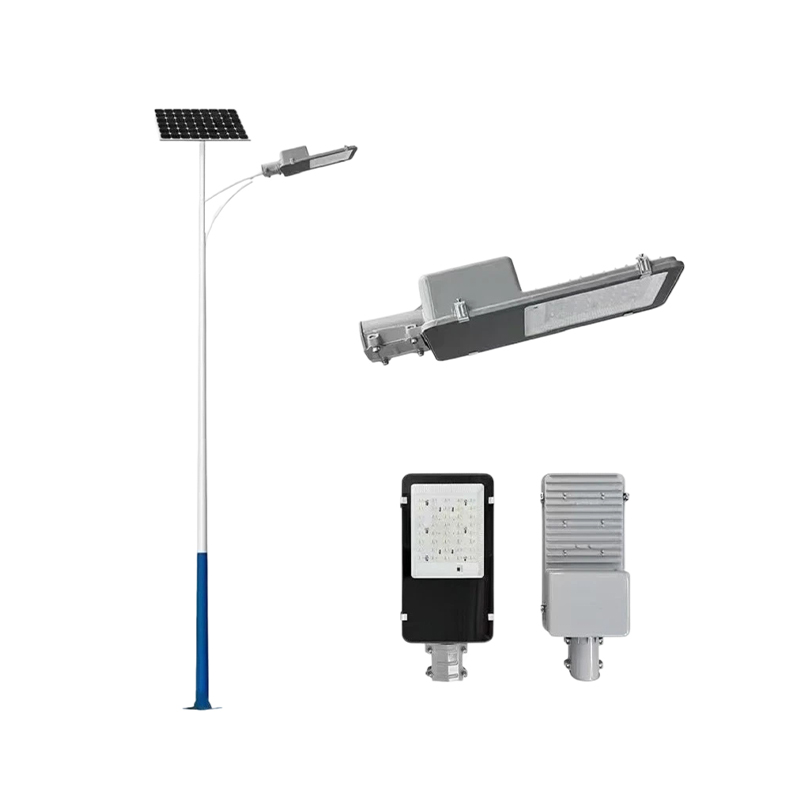How do the durable and stable characteristics of solar street lights provide reliable assurance for road lighting?
Release Time : 2025-11-18
Against the backdrop of global energy structure transformation and the deepening of sustainable development concepts, the construction of green, low-carbon, and intelligent urban infrastructure has become a common goal pursued by all countries. As an important component of urban public lighting systems, solar street lights, with their advantages of clean energy supply, independent operation, low maintenance costs, and environmental friendliness, are gradually replacing traditional municipal streetlights and are widely used in urban secondary roads, rural roads, park trails, industrial parks, and remote areas without electricity.
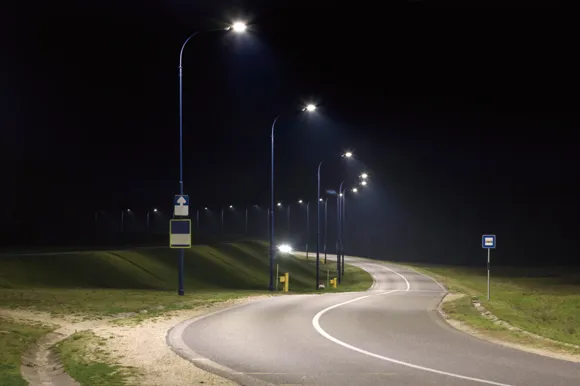
1. Independent Energy Supply System, Free from Grid Dependence
The core of solar street lights lies in their completely independent energy supply mode. The system consists of high-efficiency crystalline silicon photovoltaic modules, intelligent controllers, long-life energy storage batteries, and LED light sources. During the day, solar energy is converted into electricity through photovoltaic panels and stored in the batteries. At night, the LED lights are automatically turned on for illumination. The entire process does not require connection to the municipal power grid, fundamentally solving the problems of high cost and difficult construction of laying cables in remote areas.
More importantly, this off-grid design avoids lighting interruptions caused by grid failures, power outages, or voltage fluctuations, significantly improving the continuity and emergency response capabilities of public lighting. In areas prone to natural disasters or with weak power infrastructure, solar street lights often become the only lighting solution capable of long-term stable operation.
2. High-efficiency components work together to ensure stable operation around the clock.
Modern solar street lights are no longer simple combinations of "photovoltaics + bulbs," but highly integrated intelligent photovoltaic and energy storage systems. Their "long-lasting and stable" performance benefits from the synergistic optimization of key components:
High-efficiency photovoltaic panels: Using monocrystalline silicon or PERC technology, photovoltaic modules achieve a photoelectric conversion efficiency of over 22%, effectively charging even in low light or cloudy conditions;
Long-cycle-life batteries: Lithium iron phosphate batteries have a deep cycle life of over 2000 cycles, a wide operating temperature range, and no memory effect, supporting years of replacement-free operation;
Intelligent light and time control system: Built-in microprocessors automatically switch lights on and off according to ambient light intensity and support time-of-day dimming, extending battery life while ensuring lighting needs are met;
High-efficiency LED light source: Luminous efficacy reaches 130–160 lm/W, with a lifespan exceeding 50,000 hours. Combined with optical lenses, precise light distribution is achieved, reducing light pollution and energy waste. Real-world testing data shows that, under standard configuration, a single solar street light system can maintain basic lighting functionality even after seven consecutive days of overcast and rainy weather, fully demonstrating its robustness in extreme weather conditions.
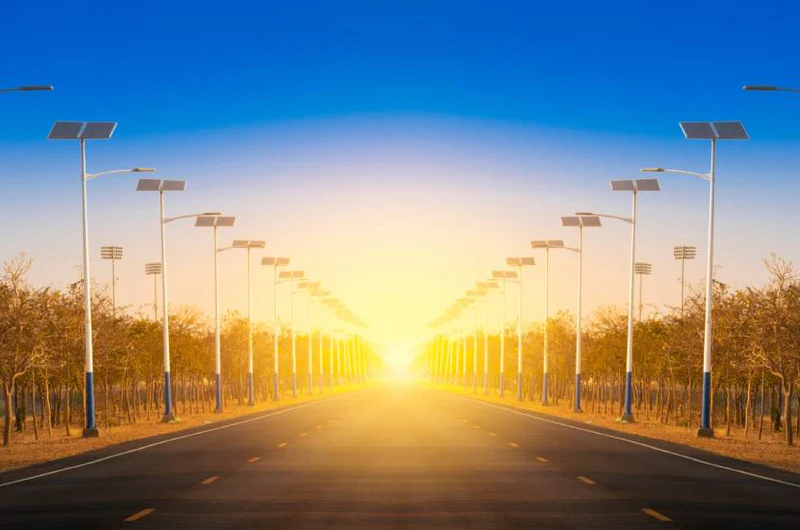
3. Wide Temperature Range and Protective Design for Complex Environments
To ensure long-term reliable operation under various climatic conditions, solar street lights generally employ high-level protective designs. The overall protection rating typically reaches IP65 or even IP67, effectively preventing dust and water damage and resisting corrosion from harsh environments such as heavy rain, sandstorms, and salt spray. The battery compartment and electronic control unit mostly utilize sealed structures or potting processes to prevent moisture intrusion that could lead to short circuits or corrosion.
Meanwhile, all system components are selected according to wide-temperature operating standards. For example, the controller can operate normally within a range of -30°C to +70°C, and the LED driver power supply has overvoltage, overcurrent, and reverse connection protection functions. In the cold winters of Northern Europe or the hot deserts of the Middle East, this design ensures stable, year-round illumination of the streetlights, truly achieving "install and use immediately, worry-free for a long time."
4. Low Operation and Maintenance Costs and Significant Environmental Benefits
Compared to traditional municipal streetlights, solar streetlights demonstrate significant economic and ecological advantages throughout their entire lifecycle. While the initial investment is slightly higher, there are no electricity bills, and costs associated with cable laying, transformer installation, and frequent maintenance are eliminated. According to calculations by the International Renewable Energy Agency, a single solar streetlight system can save over 60% on electricity and maintenance costs over its 10-15 year lifespan.
In terms of carbon reduction, a single solar streetlight system consuming 0.6 kWh per day can reduce carbon dioxide emissions by approximately 150 kilograms annually if it replaces coal-fired power. If a small town deploys 500 such streetlights, the annual carbon reduction would be close to 75 tons, equivalent to planting 4,000 mature trees. Furthermore, the system contains no harmful substances such as mercury or lead, and is easily recyclable after disposal, conforming to the principles of a circular economy.
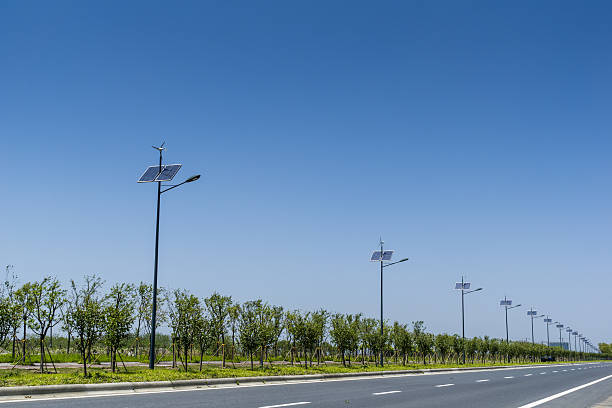
5. Intelligent Upgrade, Towards a New Stage of Smart Lighting
With the development of the Internet of Things and 5G technology, solar streetlights are evolving into "smart terminals." By integrating remote communication modules, environmental sensors, and edge computing units, streetlights can achieve remote monitoring, fault warnings, adaptive brightness adjustment, and even serve as information nodes in smart cities, supporting functions such as security cameras, Wi-Fi hotspots, or charging stations. This "one pole, multiple uses" model not only improves resource utilization efficiency but also provides data support for urban management.
Solar street lights, with their advantages of energy self-sufficiency, stable operation, strong environmental adaptability, and low life-cycle cost, have become an indispensable green solution in modern road lighting systems. They not only illuminate roads at night but also illuminate the future path of sustainable urban development. With the continuous improvement of photovoltaic efficiency, breakthroughs in energy storage technology, and increasing intelligence, solar streetlights will undoubtedly play a broader and more profound role globally, truly fulfilling their mission of "lasting stability and providing reliable guarantees for road lighting."

1. Independent Energy Supply System, Free from Grid Dependence
The core of solar street lights lies in their completely independent energy supply mode. The system consists of high-efficiency crystalline silicon photovoltaic modules, intelligent controllers, long-life energy storage batteries, and LED light sources. During the day, solar energy is converted into electricity through photovoltaic panels and stored in the batteries. At night, the LED lights are automatically turned on for illumination. The entire process does not require connection to the municipal power grid, fundamentally solving the problems of high cost and difficult construction of laying cables in remote areas.
More importantly, this off-grid design avoids lighting interruptions caused by grid failures, power outages, or voltage fluctuations, significantly improving the continuity and emergency response capabilities of public lighting. In areas prone to natural disasters or with weak power infrastructure, solar street lights often become the only lighting solution capable of long-term stable operation.
2. High-efficiency components work together to ensure stable operation around the clock.
Modern solar street lights are no longer simple combinations of "photovoltaics + bulbs," but highly integrated intelligent photovoltaic and energy storage systems. Their "long-lasting and stable" performance benefits from the synergistic optimization of key components:
High-efficiency photovoltaic panels: Using monocrystalline silicon or PERC technology, photovoltaic modules achieve a photoelectric conversion efficiency of over 22%, effectively charging even in low light or cloudy conditions;
Long-cycle-life batteries: Lithium iron phosphate batteries have a deep cycle life of over 2000 cycles, a wide operating temperature range, and no memory effect, supporting years of replacement-free operation;
Intelligent light and time control system: Built-in microprocessors automatically switch lights on and off according to ambient light intensity and support time-of-day dimming, extending battery life while ensuring lighting needs are met;
High-efficiency LED light source: Luminous efficacy reaches 130–160 lm/W, with a lifespan exceeding 50,000 hours. Combined with optical lenses, precise light distribution is achieved, reducing light pollution and energy waste. Real-world testing data shows that, under standard configuration, a single solar street light system can maintain basic lighting functionality even after seven consecutive days of overcast and rainy weather, fully demonstrating its robustness in extreme weather conditions.

3. Wide Temperature Range and Protective Design for Complex Environments
To ensure long-term reliable operation under various climatic conditions, solar street lights generally employ high-level protective designs. The overall protection rating typically reaches IP65 or even IP67, effectively preventing dust and water damage and resisting corrosion from harsh environments such as heavy rain, sandstorms, and salt spray. The battery compartment and electronic control unit mostly utilize sealed structures or potting processes to prevent moisture intrusion that could lead to short circuits or corrosion.
Meanwhile, all system components are selected according to wide-temperature operating standards. For example, the controller can operate normally within a range of -30°C to +70°C, and the LED driver power supply has overvoltage, overcurrent, and reverse connection protection functions. In the cold winters of Northern Europe or the hot deserts of the Middle East, this design ensures stable, year-round illumination of the streetlights, truly achieving "install and use immediately, worry-free for a long time."
4. Low Operation and Maintenance Costs and Significant Environmental Benefits
Compared to traditional municipal streetlights, solar streetlights demonstrate significant economic and ecological advantages throughout their entire lifecycle. While the initial investment is slightly higher, there are no electricity bills, and costs associated with cable laying, transformer installation, and frequent maintenance are eliminated. According to calculations by the International Renewable Energy Agency, a single solar streetlight system can save over 60% on electricity and maintenance costs over its 10-15 year lifespan.
In terms of carbon reduction, a single solar streetlight system consuming 0.6 kWh per day can reduce carbon dioxide emissions by approximately 150 kilograms annually if it replaces coal-fired power. If a small town deploys 500 such streetlights, the annual carbon reduction would be close to 75 tons, equivalent to planting 4,000 mature trees. Furthermore, the system contains no harmful substances such as mercury or lead, and is easily recyclable after disposal, conforming to the principles of a circular economy.

5. Intelligent Upgrade, Towards a New Stage of Smart Lighting
With the development of the Internet of Things and 5G technology, solar streetlights are evolving into "smart terminals." By integrating remote communication modules, environmental sensors, and edge computing units, streetlights can achieve remote monitoring, fault warnings, adaptive brightness adjustment, and even serve as information nodes in smart cities, supporting functions such as security cameras, Wi-Fi hotspots, or charging stations. This "one pole, multiple uses" model not only improves resource utilization efficiency but also provides data support for urban management.
Solar street lights, with their advantages of energy self-sufficiency, stable operation, strong environmental adaptability, and low life-cycle cost, have become an indispensable green solution in modern road lighting systems. They not only illuminate roads at night but also illuminate the future path of sustainable urban development. With the continuous improvement of photovoltaic efficiency, breakthroughs in energy storage technology, and increasing intelligence, solar streetlights will undoubtedly play a broader and more profound role globally, truly fulfilling their mission of "lasting stability and providing reliable guarantees for road lighting."

